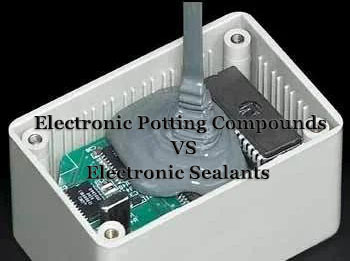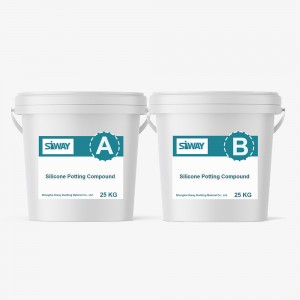In the field of electronics, the use of protective materials is crucial to ensure the longevity and reliability of electronic components. Among these materials, electronic potting compounds and electronic sealants play an important role in protecting sensitive electronic devices from various environmental hazards. While both serve a protective purpose, their composition, application, and function differ.

Electronic potting compounds are specially formulated materials used to encapsulate and protect electronic components such as circuit boards from external factors such as moisture, dust, and mechanical stress. These compounds are typically made from a combination of resins, fillers and additives that provide insulation, thermal conductivity and mechanical support. The potting process involves pouring the compound over the component, allowing it to flow and fill any voids or gaps, and then curing it to form a solid protective layer. The cured potting glue forms a strong barrier to protect components from environmental influences, enhances their electrical insulation and effectively dissipates heat. It is widely used in electronic appliances, instrumentation, new energy and other industries. For example: Siway Two Component 1:1 Electronic Potting Compound Sealant
◆ Low viscosity, good fluidity, fast bubble dissipation.
◆ Excellent electric insulation and heat conduction.
◆ It can be deeply potting without the generation of low molecular substances during the curing, has extremely low shrinkage and excellent adhesion to components.

Electronic sealants are designed to create an airtight seal around electrical connections, joints, or openings. Unlike potting compounds, sealants are typically applied as a liquid or paste and then cure to form a flexible, water-resistant and air-tight seal. These sealants are typically made from silicone or polyurethane materials that provide excellent adhesion, flexibility, and resistance to moisture, chemicals, and temperature changes. Electronic sealants are primarily used to prevent water, dust or other contaminants from entering electronic devices, ensuring their operational integrity and reliability. For example: Siway 709 silicone sealant For Solar Photovoltaic Assembled Parts
◆ Resistant to moisture, dirt and other atmospheric components
◆ High strength, excellent adhesion
◆ Good pollution resistance and low surface pretreatment requirements
◆ No solvent, no curing by-products
◆ Stable mechanical and electrical properties between -50-120℃
◆ Has good adhesion to plastic PC, fiberglass cloth and steel plates, etc.

While both electronic potting compounds and electronic sealants provide protection, their application varies based on the specific requirements of the electronic device. Potting compounds are typically used in applications that require complete encapsulation of components, such as outdoor electronics, automotive electronics, or high-vibration environments. The rigid nature of the potting compound provides excellent mechanical support and protection against physical stress. Electronic sealants, on the other hand, are used where sealing connections, joints, or openings is important, such as electrical connectors, cable entries, or sensor housings. The sealant's flexibility and adhesive properties allow it to conform to irregular shapes and provide a reliable seal against moisture and other contaminants.
In summary, electronic potting compounds and electronic sealants are two different materials used to protect electronic components. Potting compounds provide encapsulation and mechanical support, while sealants focus on creating an airtight seal to prevent contaminants from entering. Understanding the differences between these materials is critical to choosing the right solution to ensure the longevity and reliability of electronic devices in a variety of applications.sealants focus on creating an airtight seal to prevent contaminants from entering. Understanding the differences between these materials is critical to choosing the right solution to ensure the longevity and reliability of electronic devices in a variety of applications.

Post time: Oct-08-2023

